How do birds see?
This question probably crossed your mind whenever you saw a bird. Do they see us? How do birds see humans? Can birds see colors? If yes, what colors do birds see? What if I was a bird, would I be color blind? Thankfully, scientific research has revealed a fantastic world of animal vision diversity, and we will answer those questions for you. Let’s see comparative graphs and explanations to properly understand how birds see the world.
More info: Cynthia Tedore
Image credits: jeff mathew
Birds are mysterious creatures when you really look into them and how they view our world. For example, did you know that pigeons are thought to have superior vision at color detection compared to any animal on Earth and are often used in search and rescue missions? Various avians have different superpowers and mysterious ways of working their sensations. Still, one thing is true for most birds—their superior vision compared to humans.
So, most types of birds aren’t color blind. Unlike humans, birds see ultraviolet (UV) light because their lenses and other ocular media transmit UV light. They have special photoreceptors that vary by species and are sensitive to violet or UV light. Eagles and Owls have the sharpest eyesight, while Kiwi (a flightless bird) has the poorest eyesight in the avian world.
Image credits: Klaus Schmitt
The graphic compares the spectral field of bird vision vs human vision. As tetrachromats, birds see four colors: UV, blue, green, and red. On the other hand, we are trichromats, so humans can only see three colors: blue, green, and red. Bear in mind that the magenta UV “color” shown here has been chosen to make it visible to humans; it is a “false color”; as per definition, UV light has no color.
Birds have a focal point to see straight ahead and also to the side, just like humans. Another similarity to humans is that birds have long, medium, and short wavelength cones. They actually have one more cone type to help them detect wavelengths close to the UV light. But birds don’t see a reflection in the mirror, which humans can do.
Spectral Field of Vision for Humans and Birds
Image credits: unknown
Birds See Colors That Are Invisible to the Human Eye
Image credits: Cynthia Tedore
The ornithologist, Joe Smith explains that birds can see a whole spectrum of colors that are invisible to us, people. Back in 2007, scientists, with the help of a spectrophotometer, analyzed the colors of 166 North American songbird species, which did not have an apparent physical difference between the sexes. From a human’s perspective, in 92 percent of species, both males and females look identical. However, the study showed that these birds see colors that are simply undetectable by our eye, which helps them differentiate their genders.
And if you’re wondering what colors can birds not see, we have a simple, straightforward answer—Birds see all shades of colors. However, according to Birdfact, they have their preferences. A strong, bright white color is often an alert for a dangerous area. Also, birds are pretty sensitive toward the colors of their own species, their predator’s hues, or food sources.
Image credits: Joel Sartore
For example, the male Yellow-breasted Chat has a yellow breast (pretty obvious), but a bird’s eye view also reveals ultraviolet feathers on his chest that set him apart from the females of the species. The theory was again proven in another study in which scientists placed taxidermied male and female Chats in the wild to see how their living counterparts would react. Males stayed true to their territorial nature, attacked the stuffed male Chats, and tried winning over the taxidermied females. Thus, they obviously were seeing something that the researchers couldn’t.
Image credits: unknown
Here’s What People Online Say About Bird Vision
460Kviews
Share on FacebookWhat's horrifying is when you realize how terrible our vision is simply because we are mammals... most birds, fish and reptiles have a vision that is far superior to ours -.- At least we are lucky to be primates, so we can see a whooping THREE colors, as opposed to most mammals which know only 2 colors. But look closer at the plot on color vision - our receptors for red and green are pretty close together. For birds, they are well separated. That's because they had a longer time to adjust their color vision to be quite perfect (their 4 color receptors have existed for many, many millenia). 3-color vision in primates, however, is evolutionary pretty new (starting from mammals' inferior 2-color vision); so we aren't done yet with the adjustment of receptors. Damn. 'bout time I wrote that explanation on our color vision and its evolution, I've been mentally working on it for months! There's so much left out in this article. Gonna go back to writing that thesis, hand it in, and then go wri
That would be a cool article, just make sure you find information from legitimate sources. Have fun!
Load More Replies...It IS pretty amazing. I agree with the top comment: another reason to be jealous of birds is that they have HDR eyes.
What's horrifying is when you realize how terrible our vision is simply because we are mammals... most birds, fish and reptiles have a vision that is far superior to ours -.- At least we are lucky to be primates, so we can see a whooping THREE colors, as opposed to most mammals which know only 2 colors. But look closer at the plot on color vision - our receptors for red and green are pretty close together. For birds, they are well separated. That's because they had a longer time to adjust their color vision to be quite perfect (their 4 color receptors have existed for many, many millenia). 3-color vision in primates, however, is evolutionary pretty new (starting from mammals' inferior 2-color vision); so we aren't done yet with the adjustment of receptors. Damn. 'bout time I wrote that explanation on our color vision and its evolution, I've been mentally working on it for months! There's so much left out in this article. Gonna go back to writing that thesis, hand it in, and then go wri
That would be a cool article, just make sure you find information from legitimate sources. Have fun!
Load More Replies...It IS pretty amazing. I agree with the top comment: another reason to be jealous of birds is that they have HDR eyes.
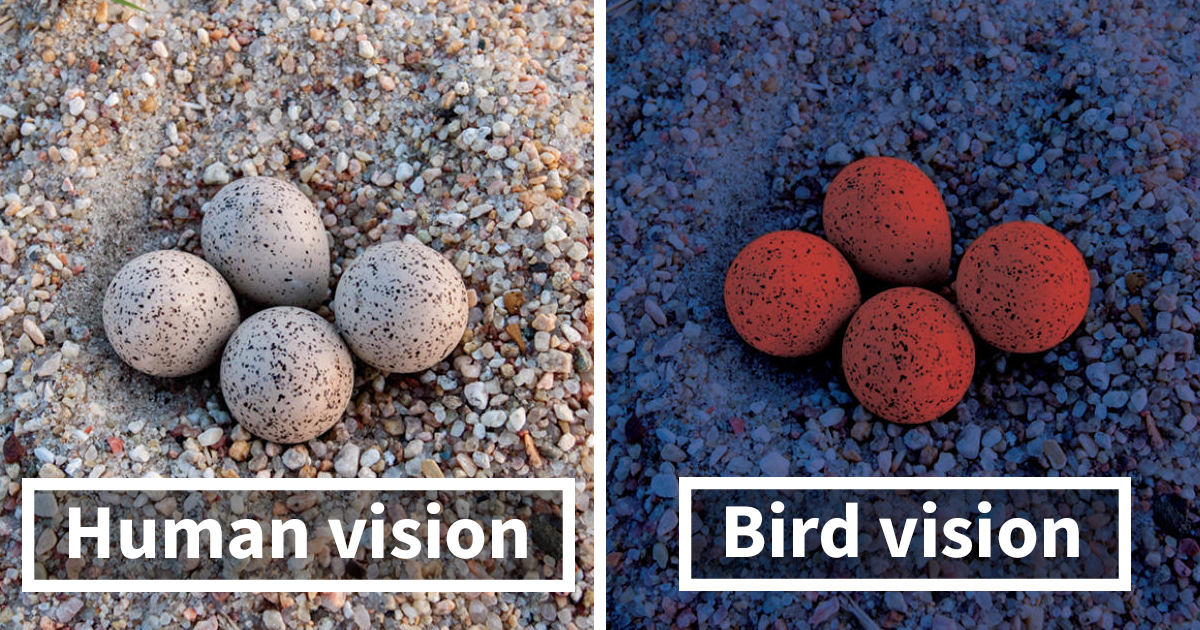

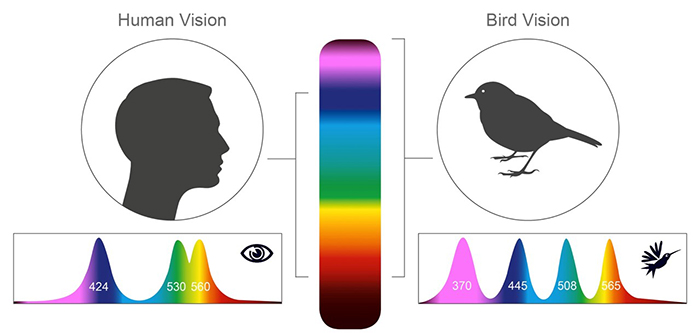
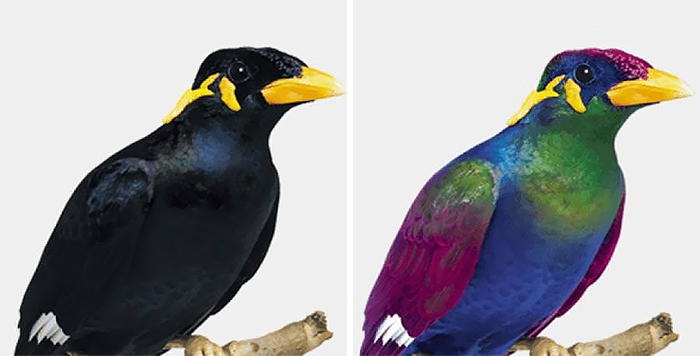
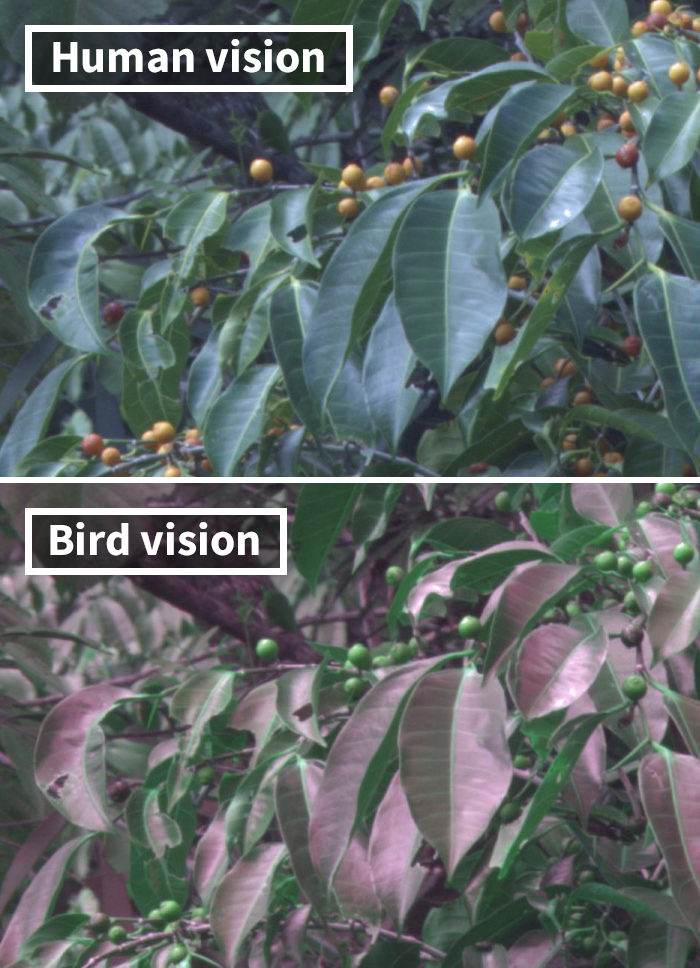
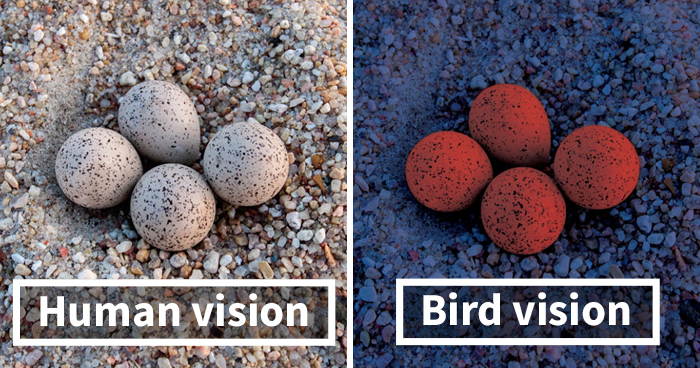
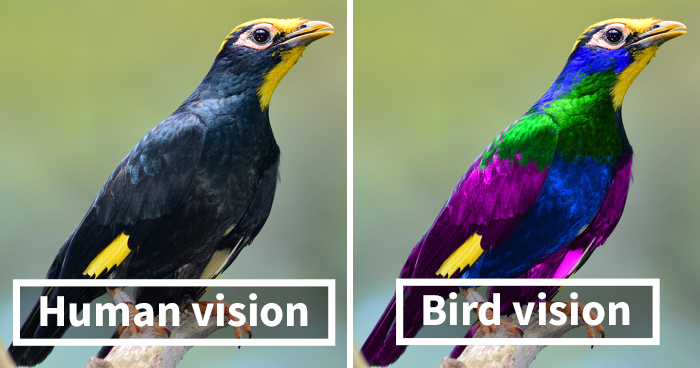



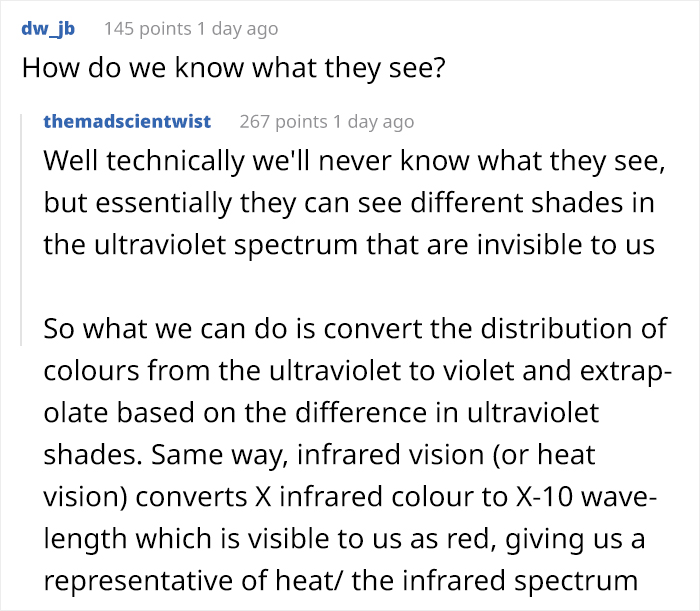




402
64